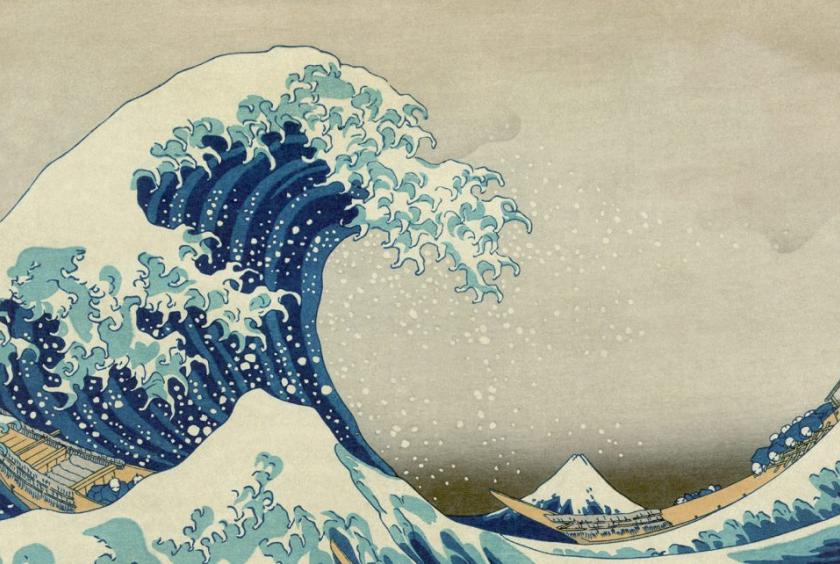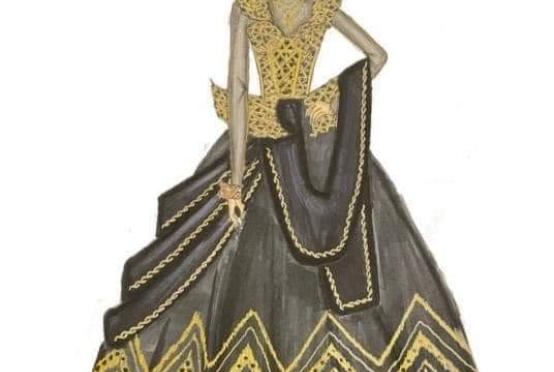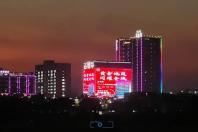(The Japan News/ANN) - Internationally, Katsushika Hokusai (1760-1849) is surely the most famous Japanese artist of all time
A large part of that fame comes from the many-faceted artistry of his best-known woodblock print series depicting Thirty-six Views of Mt. Fuji — and particularly its inspiringly powerful “Great Wave” view. Another big source of Hokusai’s international fame is the volumes of sketches compiled in woodblock print form in the series of books known as “Hokusai Manga” (Sketches by Hokusai) that amazed such 19th-century artists as Manet, Monet and Van Gogh with Hokusai’s powers of observation and irrepressible creative curiosity and energy. But there is so much more to Hokusai’s art than most people know.
The major Hokusai exhibition now on view at the Mori Arts Center Gallery in Roppongi, Tokyo, has a slickly contemporary English title: “Hokusai Updated.” However, this is neither a slick nor even a very contemporary exhibition. In fact, it is a grand culmination of some 30 years of tireless work and collecting by one of Japan’s leading Hokusai specialists, the late Seiji Nagata, who passed away last year before he could see the opening of the exhibition he had planned and assembled as a final statement from his lifetime of research.
Speaking at the exhibition’s press preview, ukiyo-e researcher Mika Negishi — one of those who took over the final task of “editing” the exhibition for its long-awaited opening — explained that there are actually two meanings to the word “Updated” in the English title (and the “New” [shin] in the Japanese title). One is the large number of Hokusai works in the exhibition that are newly discovered and have never been shown to the public — most of which Nagata uncovered himself in museums and private collections in Japan and around the world.
The second meaning comes from Nagata’s desire to show that Hokusai repeatedly changed his style and subject matter dramatically throughout the roughly seven decades of his artistic career — thus constantly “updating” his art. In this respect, Hokusai is sometimes likened to the great 20th-century artist Pablo Picasso.
Nagata always said that people who think they know Hokusai usually know only a small part of the colossal volume and diversity of his art. To show this great diversity, the exhibition divides Hokusai’s oeuvre into six periods that roughly correspond to the different artist names he adopted during his life. After working as a woodblock carver from the age of 16, Hokusai studied under a popular artist who specialized in Kabuki actor portraits, and from the age of 19 he was already publishing prints under his given artist name of Shunro.
It wasn’t until the age of 45 that he adopted the name Katsushika Hokusai by which he is best known today. By this point in his career he had become famous for his book illustrations and could command high prices for his work, which never failed to capture the imagination of readers with bold compositions and creative ideas. This in turn gave Hokusai the freedom to pursue a variety of new styles and techniques, including Western vanishing-point perspective, and to try new genres like the popular cut-out prints of the day that could be assembled into 3-dimensional scenes — the example we see in this show is of a public bathhouse. His mastery with subjects such as portraits of beautiful women, which is seen in works like “Woman reading a letter,” was also evident by this period.
It was in the period after the age of 50 that Hokusai adopted the artist name Taito and began creating what would become the immensely popular Hokusai Manga series (from 1814) that eventually spread his name and fame to Europe and helped spark the “Japonisme” craze for Japanese art and craft. But what few people know is that he didn’t create the famous Thirty-six Views of Mt. Fuji series until he was past the age of 70. The series is well represented in this show, along with an actual set of the printing woodblocks and tools it takes to print the most famous of all, “Under the Wave off Kanagawa.”
Other print series we see from this period of famous waterfalls and characters from ghost stories show Hokusai’s genius for composition and impossible flights of imagination. However, as we see from the following famous quote he published as a postscript in one of his print collections at the age of 75, unlike Picasso, Hokusai didn’t think of himself as a genius.
“... all I did before the age of 70 is not worth bothering with. At 75, I have learned something of the pattern of nature, of animals, of plants, of trees, birds, fish and insects. When I am 80, you will see real progress. At 90, I will have reached deep into the mystery of life. At 100, I will be a wonderful artist ...”
For Hokusai, his art was clearly an unending path of self-enlightenment, and you will rarely, if ever, find an exhibition that shows that path so completely. For visitors hoping to tour the path this encyclopedic chronological exhibition lays out for us, a bit of advice might be to save some energy for the late masterpieces of Hokusai art in the last galleries, such as “The priest Kobo Daishi exorcising a demon.” Or, simply plan more than one visit!
“Hokusai Updated” will run through March 24 at the Mori Arts Center Gallery (52nd floor of Roppongi Hills Mori Tower) in Roppongi, Tokyo. Opening hours are from 10 a.m. to 8 p.m., or until 5 p.m. on Tuesdays. (Admission ends 30 minutes before closing time.) The gallery is closed on Feb. 19, Feb. 20 and March 5. Visit https://hokusai2019.jp/ for more details.












